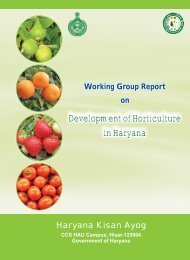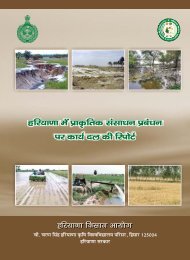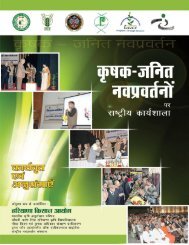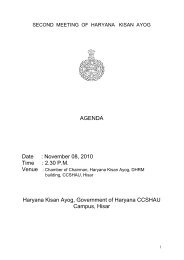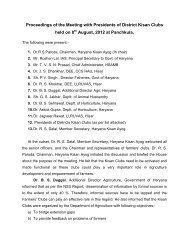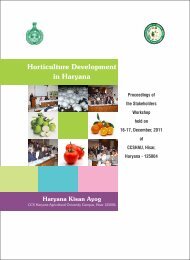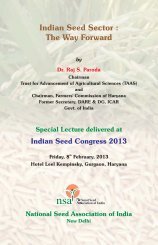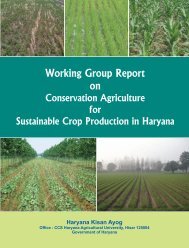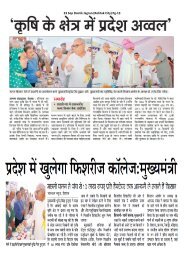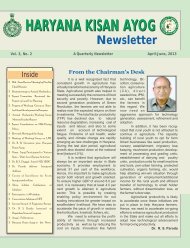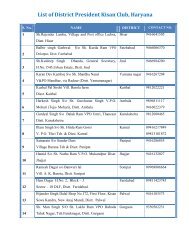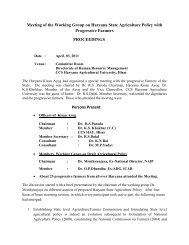Working Group Report on - Haryana Kisan Ayog
Working Group Report on - Haryana Kisan Ayog
Working Group Report on - Haryana Kisan Ayog
- No tags were found...
You also want an ePaper? Increase the reach of your titles
YUMPU automatically turns print PDFs into web optimized ePapers that Google loves.
DIRECTOR/VICE CHANCELLORCIFE, ICAR & CHAIRMANWORKING GROUP ON FISHERIESDEVELOPMENT IN HARYANAPREFACEFisheries and aquaculture are vibrant ec<strong>on</strong>omic activities and have been <strong>on</strong>e of thefastest growing food producti<strong>on</strong> systems during the last three decades in India. Withabout 8 milli<strong>on</strong> t<strong>on</strong>nes of fish producti<strong>on</strong>, India ranks sec<strong>on</strong>d in global capture andculture fisheries producti<strong>on</strong>. Its significance and c<strong>on</strong>tributi<strong>on</strong> towards agriculturalGDP (5.4 per cent) and nati<strong>on</strong>al ec<strong>on</strong>omies (1.1 per cent GDP), livelihood andnutriti<strong>on</strong>al security, employment generati<strong>on</strong> (14.5 milli<strong>on</strong> people) and foreignexchange earnings (over Rs.12000 crores in 2011-12) have been enormous,though understated so far.<strong>Haryana</strong> is <strong>on</strong>e of the main engines of growth propelling Indian aquacultureforward with 58,436 ha of potential water resources, 18,000 ha of culture area andabout <strong>on</strong>e lakh t<strong>on</strong>nes of fish producti<strong>on</strong>. Though it c<strong>on</strong>tributes <strong>on</strong>ly 2.1% in inlandfish producti<strong>on</strong> of India, the productivity (5.5 t<strong>on</strong>nes/ha) is twice the nati<strong>on</strong>alaverage and has been growing faster (11.4%) than the rest of India (8%) during thelast two decades. With the p<strong>on</strong>d resources fully exploited in <strong>Haryana</strong>, the unutilizedsalt affected and waterlogged areas hold the maximum potential for fisheriesdevelopment in the immediate future. As the report underlies, the fish producti<strong>on</strong>can become 3.5 lakh t<strong>on</strong>nes by 2022 if these resources are harnessed throughappropriate technological and managerial interventi<strong>on</strong>s.This report of the <str<strong>on</strong>g>Working</str<strong>on</strong>g> <str<strong>on</strong>g>Group</str<strong>on</strong>g> <strong>on</strong> Fisheries assesses the present status of fisheriesdevelopment in <strong>Haryana</strong>, identifies the opportunities as well as challenges forfurther development and provides appropriate technological, developmental and( v )



